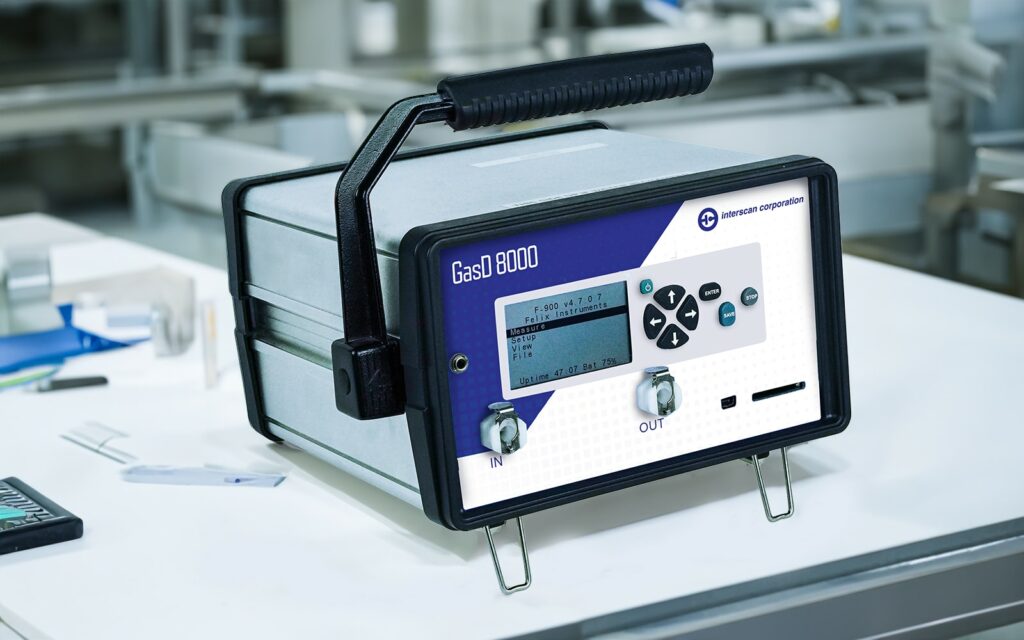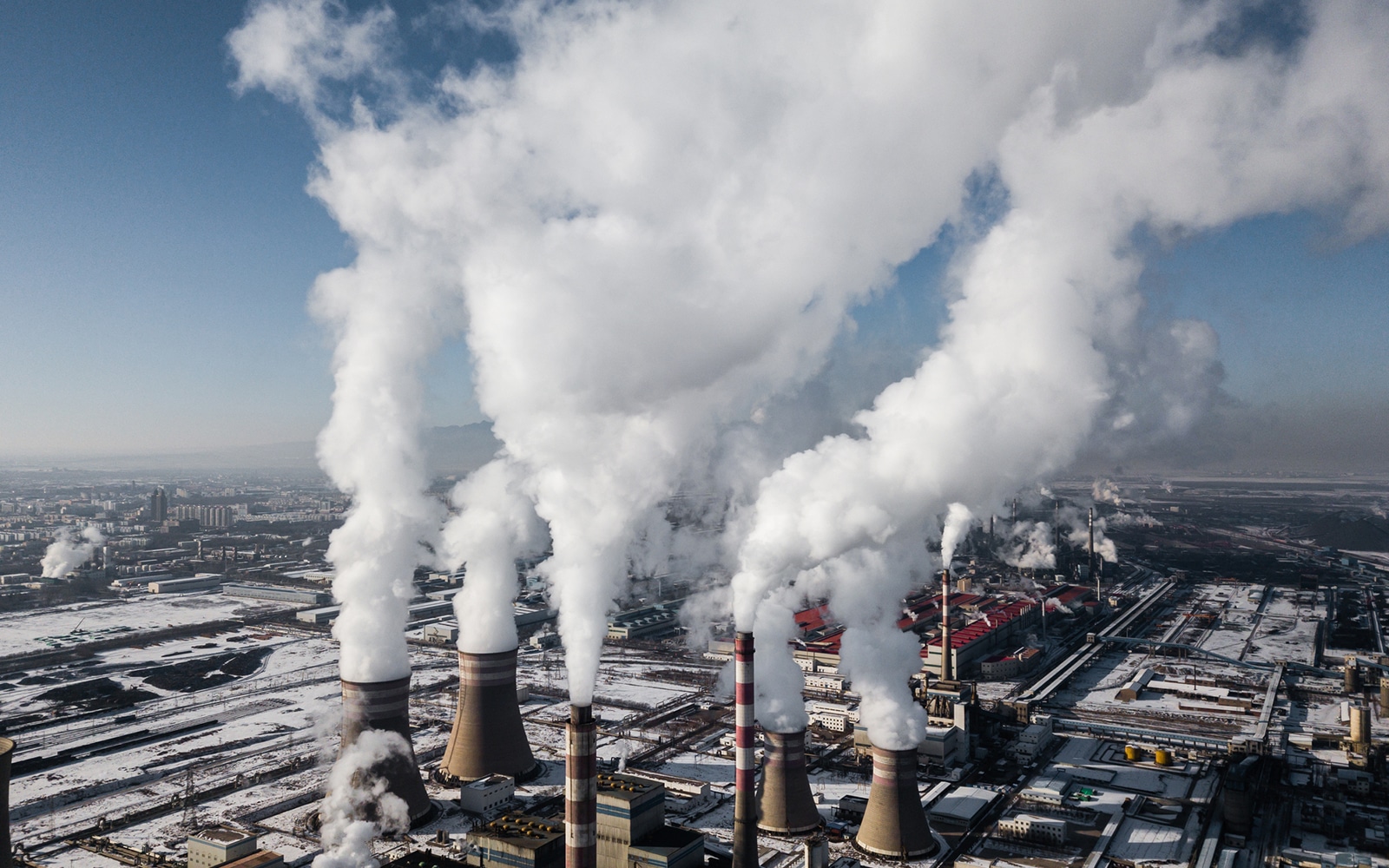- Sulfur dioxide significantly affects air, water, soil quality, and ecosystems.
- Detecting Sulfur Dioxide in oil and gas companies is expected to control emissions by modernizing and changing the crude oil used as feedstock.
- Continuous and equipment leak emissions detection year-round is essential to track pollutants, formulate mitigation plans, and control emissions.
Sulfur dioxide is one of the most significant pollutants the oil and gas industry emits in all its operations, like extraction, transportation, and marketing, especially refining. Due to the environmental impact caused by the pollutant, companies must take measures to control the emissions. They will need to focus on emission detection to mitigate the problem. In this article, facility and mechanical engineers can find out how emission detection can help in its control.
Sulfur Dioxide Pollution in the Petroleum Industry
The oil and gas industry’s sulfur dioxide (SO2) emissions come from all upstream and downstream stages, such as exploration, extraction, refining, transportation, and marketing.
All the stages produce similar pollution, but refining is the most polluting. In fact, refineries are a leading air polluter globally.
The petroleum, or the oil and gas industry, produces natural gas and liquid crude oil. Refining converts the gas and oil to more valuable products like petrol, kerosene, diesel, gasoline, jet fuel, liquefied petroleum gas, and asphalt.
Petroleum has 0.05–6.0% of sulfur, and heavier crude oils have a higher proportion. Refineries aim to reduce or remove this sulfur to reduce the formation of SO2 during fuel combustion. However, the refinery process also produces industrial emissions, of which hydrocarbons and sulfur dioxide are the most significant pollutants. Other include hydrogen sulfide, nitrogen oxides, carbon monoxide, and particulate matter.
SO2 is produced as excessive emissions from refineries into the air or due to equipment leaks, fires, and accidents.
Sulfur Dioxide
Sulfur dioxide is a colorless soluble gas with a characteristic pungent odor. It forms sulfuric acid when it combines with water.
The processes that produce SO2 will also create many other lesser-polluting gaseous sulfur oxides (SOx). Measures that control SO2 will also limit emissions of the other sulfur oxides.
SO2 is an air pollutant of concern as it is a health hazard and has a harmful environmental impact that further affects people’s well-being. Detecting Sulfur Dioxide is crucial for mitigating its adverse effects on health and the environment.
Health Effects
SO2 affects people through inhalation and skin or eye contact. Children, adults, and elderly with respiratory problems are more sensitive to SO2. Acute exposures irritate the eyes, nose, throat, and lungs. It leads to wheezing, coughing, phlegm, and asthma attacks, especially during physical activity or exercise. The gas could lead to cardiovascular disease.
Environmental Impact
Sulfur dioxide’s environmental impact is more severe than its health effects. It increases the greenhouse effect and reduces air, water, and soil quality. SO2 forms acid rain when it dissolves in precipitation and affects plant life in entire ecosystems and forests in the northern hemisphere. SO2 also forms secondary sulfate particulates that result in haze, which reduces visibility. Haze is a hindrance even in the wilderness, damaging stones and heritage objects.
Because of SO2’s adverse effects, the permissible limit levels are becoming stricter.
Permissible limits
In the US, the permissible exposure limit (PEL) set by the Occupational Safety and Health Administration (OSHA) is 5 ppm (13 mg/m3) for TWA (total weight average) for an 8-hour work shift. Detecting Sulfur Dioxide in work environments helps ensure compliance with these limits.
The National Institute for Occupational Safety and Health (NIOSH) REL TWA is 2 ppm (5 mg/m3)
The EPA recommends that daily one-hour concentrations not exceed 75 ppb (parts per billion).

Figure 1: The plan developed by the Bay Area Air Quality Management District (BAAQMD). (Credits: https://www.baaqmd.gov/~/media/files/communications-and-outreach/community-outreach/refinery-rules/workshop_report_final-pdf.pdf)
Prevention and Mitigation
Emissions from the facilities must be reduced to ensure that indoor and outdoor ambient air is not polluted with higher than permitted SO2 levels. Pollution from the oil and gas industry results due to the type of design and operating processes, monitoring and maintenance, quality of equipment, and processing circumstances. Also, tanker or well accidents, pipeline breaks, and tank eruptions and explosions can release substantial amounts of SO2 into the atmosphere.
The US introduced the Petroleum Refinery Emission Reduction Strategy to reduce risk from the oil and gas industry’s emissions by at least 20 percent.
The method and stages to reduce SO2 emissions are as follows:
- Use an emission control system to reduce emissions from the coke calcining facility.
- Testing and repairing heat exchanger leaks to reduce emissions from cooling towers.
- Control equipment leaks.
For this, monitoring and measuring emissions is necessary.
The strategy also requires that all oil and gas facilities measure and establish baseline emissions to calculate how much of their emissions they need to cut to meet the 20% reduction goals.
Emissions Detection and Measurements
Detecting emissions must be done with new technology that gives accurate results in real-time so that personnel can keep track of emissions and react in case of malfunctions. Two types of monitoring are needed in oil and gas industries- continuous monitoring and equipment leaks.
Continuous Monitoring

To find methods to mitigate pollutant levels, first, the annual total pollution from refineries and other gas and oil facilities, all gases, including SO2, must be measured. Continuous monitoring will also provide data that pinpoints the sources of pollution in the facilities’ processes and materials. Emission calculation will also inform facility and mechanical engineers on crude oil characteristics so that changes can be made in feedstocks. For example, limiting refinery fuel gas’ sulfur content to 40 ppm can reduce SO2 emission production. Detecting Sulfur Dioxide in real-time is essential, especially detecting equipment leaks before they become a problem. We will talk about this in the next section.
Equipment Leaks
Equipment leaks occur everywhere in the process area, from equipment and connections where leaks can develop, letting process fluids escape into the air. These include pumps, tanks, valves, flanges, or relief valves. These leaks are also called fugitive emissions, and while each leak is small, it becomes a significant emission source.
Leak detection can measure all gases or specific emissions. Spatial management of emissions is essential for adequate control. Therefore, monitoring must cover all areas in oil and gas production facilities.
Leak detection provides data for total annual emissions and assists in the repair of faulty components and processes. Leak detection and control can reduce SO2 pollution and environmental impact.
Oil and gas industries must stay within the prescribed emissions levels and be able to demonstrate that they are doing so. As part of best practices, oil and gas companies must modernize using the best control technology or change the type of crude oil they use.
Modern Emission Detection Technology
Detecting Sulfur Dioxide plays a significant role in identifying means to control and cut emissions. Besides continuous monitoring devices, personnel also need portable precise sensors for spot checks. Interscan’s GasD 8000 Series Portable Gas Analyzers for sulfur dioxide can measure three emission ranges of 0-20 ppm, 0-2000 ppb, and 0-50 ppm at resolutions of 0.01 ppm, 1 ppb, and 0.1 ppm, respectively. Several oil and gas companies have still not complied with measures to control pollutants, including SO2. They can start by measuring their emissions with the help of sensors.
Sources
Adebiyi, F. M. (2022). Air Quality and management in Petroleum Refining Industry: A Review. Environmental Chemistry and Ecotoxicology, 4, 89–96. https://doi.org/10.1016/j.enceco.2022.02.001
Bay Area Air Quality Management District. (2015, September). Petroleum Refinery Emissions Reduction Strategy: Workshop Report. https://www.baaqmd.gov/~/media/files/communications-and-outreach/community-outreach/refinery-rules/workshop_report_final-pdf.pdf
Butler, K., & Fekete, G. (2005). Measuring compliance program progress and impacts: Lessons from USEPA’s National Petroleum Refinery Compliance Program. In Seventh International Conference on Environmental Compliance and Enforcement.
EPA. (2011). Emission Estimation Protocol for Petroleum Refineries. Version 2.1: Final ICR Version. Retrieved from https://www3.epa.gov/ttn/chief/efpac/protocol/Emission_Estimation_Protocol_for_Petroleum_Refinerie_052011.pdf
EPA. (2023, February 6). Setting and Reviewing Standards to Control SO2 Pollution. Retrieved from https://www.epa.gov/so2-pollution/setting-and-reviewing-standards-control-so2-pollution
EPA. (2023, July 5). Sulfur Dioxide (SO2) Emissions From Onshore Natural Gas Processing for Which Construction, Reconstruction, or Modification Commenced After January 20, 1984, and on or Before August 23, 2011: New Source Performance Standards (NSPS). Retrieved from https://www.epa.gov/stationary-sources-air-pollution/sulfur-dioxide-so2-emissions-onshore-natural-gas-processing-which
Indiana Department of Environmental Management. (n.d.). Criteria Pollutants: Sulfur Dioxide (SO2) Office of Air Quality – Air Programs Branch. Retrieved from https://www.in.gov/idem/files/factsheet_oaq_criteria_so2.pdf
Ministry for the Environment. (n.d.). Sulphur dioxide. Retrieved from https://environment.govt.nz/facts-and-science/air/air-pollutants/sulphur-dioxide-and-effects-on-health/
NIOSH. (2019, October 30). Sulfur dioxide. Retrieved from https://www.cdc.gov/niosh/npg/npgd0575.html
Sunny, N., Bernardi, A., Danaci, D., Bui, M., Gonzalez-Garay, A., & Chachuat, B. (2022). A pathway towards net-zero emissions in oil refineries. Frontiers in Chemical Engineering, 4. https://doi.org/10.3389/fceng.2022.804163


